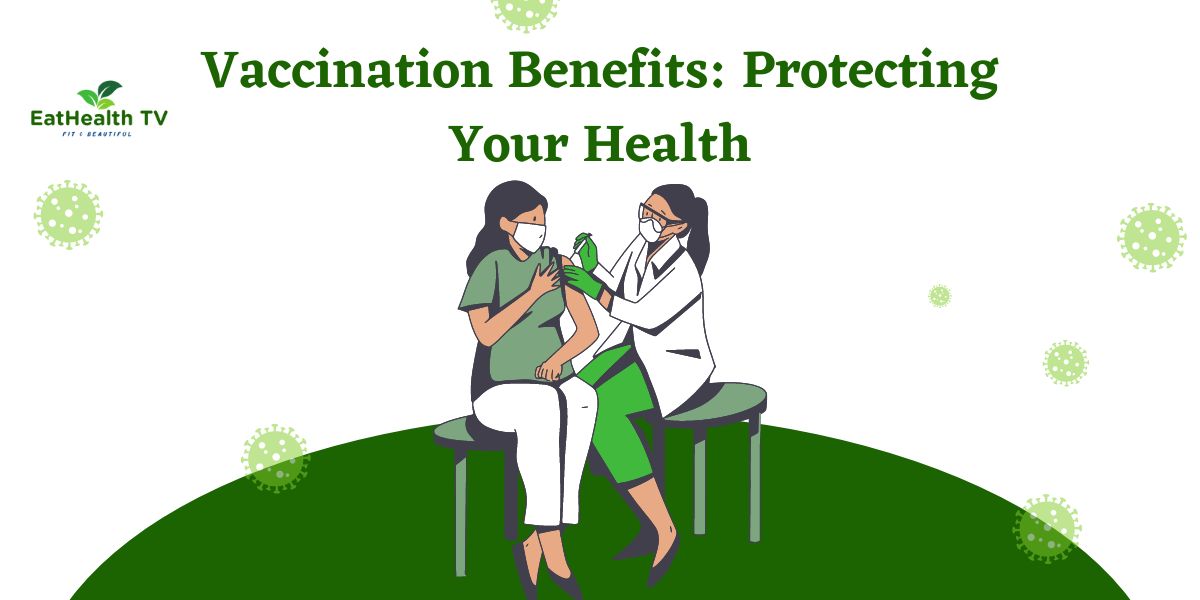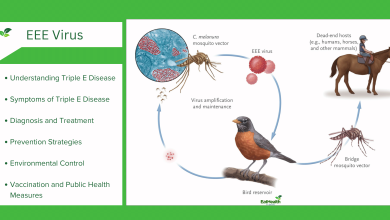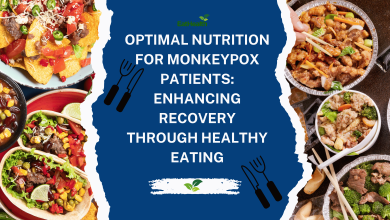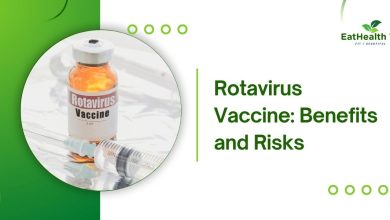Vaccination Benefits: Protecting Your Health
Empower Your Health: Unveiling the Life-Saving Benefits of Vaccination

Vaccination Benefits: Protecting Your Health
Vaccination is one of the most significant advancements in public health. It has played a crucial role in controlling and eradicating infectious diseases, saving millions of lives worldwide. From 12th-grade students to experts in the field, understanding the benefits of vaccination is essential. This comprehensive guide delves into the importance of vaccination, its benefits, and how it protects individual and public health.
Introduction to Vaccination
Vaccination, also known as immunization, involves administering a vaccine to stimulate an individual’s immune system to develop adaptive immunity to a pathogen. Vaccines contain weakened or killed forms of the virus, bacteria, or their toxins, or proteins made in a lab that imitate the virus, prompting the immune system to recognize and combat these foreign invaders.
Historical Background
The concept of vaccination dates back to the 18th century when Edward Jenner developed the first successful smallpox vaccine. Since then, vaccines have been instrumental in controlling diseases like polio, measles, and influenza. The development and widespread use of vaccines have transformed global health, leading to the near-eradication of some diseases.
How Vaccines Work
Vaccines work by mimicking infectious agents, but without causing the disease itself. When vaccinated, the immune system responds as it would to a real infection by producing antibodies. These antibodies remain in the body, providing long-term protection. Here’s a breakdown of how vaccines help in building immunity:
- Introduction of Antigens: Vaccines introduce antigens (substances that the immune system recognizes as foreign) to the body.
- Immune Response Activation: The immune system responds by producing antibodies and memory cells.
- Immunological Memory: If the individual is later exposed to the actual disease, the immune system can respond more quickly and effectively, preventing illness.
Types of Vaccines
There are several types of vaccines, each designed to teach the immune system how to fight off specific pathogens effectively. These include:
- Live-Attenuated Vaccines: Contain weakened forms of the virus or bacteria. Examples include measles, mumps, rubella (MMR) vaccine, and varicella (chickenpox) vaccine.
- Inactivated Vaccines: Contain killed pathogens. Examples include the polio vaccine and the hepatitis A vaccine.
- Subunit, Recombinant, Polysaccharide, and Conjugate Vaccines: Contain parts of the virus or bacteria. Examples include the human papillomavirus (HPV) vaccine and the hepatitis B vaccine.
- Toxoid Vaccines: Contain inactivated toxins produced by bacteria. Examples include diphtheria and tetanus vaccines.
- mRNA Vaccines: Contain messenger RNA that instructs cells to produce a protein that triggers an immune response. Examples include the Pfizer-BioNTech and Moderna COVID-19 vaccines.
Benefits of Vaccination
Vaccination offers numerous benefits, both at the individual and community levels. Here are the key advantages:
1. Individual Protection
Vaccines provide individual protection against various infectious diseases. By stimulating the immune system, vaccines help individuals build immunity without suffering from the actual disease. This protection is crucial for maintaining good health and preventing complications associated with infections.
Preventing Severe Illness
Vaccines significantly reduce the risk of severe illness and complications. For example, the influenza vaccine lowers the chances of flu-related hospitalization and death, especially in high-risk groups such as the elderly, young children, and individuals with chronic health conditions.
Long-Term Health Benefits
Vaccines contribute to long-term health by preventing chronic infections that can lead to severe complications. The hepatitis B vaccine, for instance, prevents chronic hepatitis B infection, which can lead to liver cirrhosis and liver cancer.
2. Herd Immunity
Herd immunity occurs when a significant portion of the population becomes immune to a disease, thereby reducing its spread. This indirect protection benefits those who cannot be vaccinated, such as individuals with compromised immune systems, allergies to vaccine components, or certain medical conditions.
Protecting Vulnerable Populations
Herd immunity is vital for protecting vulnerable populations, including infants too young to be vaccinated, elderly individuals, and those with weakened immune systems. By reducing the overall prevalence of disease, vaccination helps safeguard these at-risk groups.
Preventing Outbreaks
High vaccination coverage is essential for preventing disease outbreaks. When vaccination rates drop, diseases that were once under control can resurface, leading to outbreaks. This has been observed with measles outbreaks in areas with declining vaccination rates.
3. Eradication and Elimination of Diseases
Vaccination has led to the eradication and elimination of several diseases. The most notable example is smallpox, which was declared eradicated in 1980. Polio is another disease on the brink of eradication, thanks to widespread vaccination efforts.
Smallpox Eradication
The global smallpox eradication campaign is a testament to the power of vaccination. Through coordinated vaccination efforts, smallpox was eradicated, saving millions of lives and eliminating the need for ongoing vaccination against this deadly disease.
Progress Towards Polio Eradication
Polio, once a widespread and crippling disease, is now limited to a few regions. Vaccination campaigns have drastically reduced polio cases, and with continued efforts, complete eradication is within reach.
4. Economic Benefits
Vaccination provides significant economic benefits by reducing healthcare costs and preventing loss of productivity. By preventing illness, vaccines reduce the need for medical treatments, hospitalizations, and long-term care associated with chronic infections.
Reducing Healthcare Costs
Vaccines are cost-effective interventions that save healthcare systems money. For example, the rotavirus vaccine prevents severe diarrhea in children, reducing hospitalizations and associated healthcare costs.
Preventing Economic Loss
Vaccination also prevents economic loss by reducing absenteeism from work and school. Healthy individuals can contribute to the economy, whereas illness and disability due to preventable diseases can lead to significant economic burdens.
Common Vaccines and Their Impact
Several vaccines have had a profound impact on public health. Here’s a closer look at some common vaccines and the diseases they prevent:
1. Measles, Mumps, and Rubella (MMR) Vaccine
Measles: Measles is a highly contagious viral disease that can lead to serious complications such as pneumonia, encephalitis, and death. The MMR vaccine has drastically reduced measles cases and prevented outbreaks.
Mumps: Mumps can cause inflammation of the salivary glands, leading to swelling and pain. It can also cause complications such as meningitis, encephalitis, and hearing loss. The MMR vaccine effectively prevents mumps.
Rubella: Rubella, also known as German measles, can cause severe birth defects if a pregnant woman is infected. The MMR vaccine protects against rubella, preventing congenital rubella syndrome. Just as we know What are The Symptoms of Measles?
2. Human Papillomavirus (HPV) Vaccine
HPV and Cancer Prevention: The HPV vaccine protects against the human papillomavirus, which is linked to cervical, anal, and oropharyngeal cancers. Vaccination significantly reduces the incidence of these cancers, making it a crucial public health tool.
Genital Warts Prevention: The HPV vaccine also prevents genital warts, a common and uncomfortable condition caused by certain strains of the virus.
3. Influenza (Flu) Vaccine
Seasonal Influenza: The flu vaccine is updated annually to match circulating strains. It reduces the risk of flu illness, hospitalization, and death, particularly in high-risk groups such as the elderly, young children, and individuals with chronic conditions.
Pandemic Preparedness: Influenza vaccination is a key component of pandemic preparedness. It helps reduce the impact of flu pandemics by providing immunity to circulating strains.
4. Tetanus, Diphtheria, and Pertussis (Tdap) Vaccine
Tetanus: Tetanus causes painful muscle stiffness and spasms, and can be fatal. The Tdap vaccine protects against tetanus by stimulating the immune system to produce antibodies against the tetanus toxin.
Diphtheria: Diphtheria is a serious bacterial infection that affects the throat and can cause breathing difficulties, heart failure, and death. The Tdap vaccine effectively prevents diphtheria.
Pertussis (Whooping Cough): Pertussis causes severe coughing fits that can be life-threatening, especially in infants. The Tdap vaccine protects against pertussis, reducing its incidence and spread.
5. Hepatitis B Vaccine
Liver Disease Prevention: The hepatitis B vaccine prevents hepatitis B infection, which can lead to chronic liver disease, cirrhosis, and liver cancer. Vaccination has significantly reduced the incidence of hepatitis B worldwide.
Perinatal Transmission Prevention: The hepatitis B vaccine is crucial for preventing mother-to-child transmission of the virus during childbirth, protecting newborns from chronic infection.
Addressing Vaccine Hesitancy
Despite the proven benefits of vaccination, vaccine hesitancy remains a significant challenge. Vaccine hesitancy refers to the delay in acceptance or refusal of vaccines despite availability. It is influenced by factors such as misinformation, mistrust, and fear of side effects.
Common Misconceptions and Facts
Misconception: Vaccines cause autism. Fact: Extensive research has shown no link between vaccines and autism. The original study that suggested a connection has been discredited and retracted.
Misconception: Vaccines contain harmful ingredients. Fact: Vaccines contain safe ingredients, including preservatives, adjuvants, and stabilizers, which are present in very small amounts. These ingredients have been extensively tested for safety.
Misconception: Natural immunity is better than vaccine-acquired immunity. Fact: Natural infection can lead to severe illness, complications, and death. Vaccines provide immunity without causing the disease and its associated risks.
Building Trust and Confidence
Building trust and confidence in vaccines requires clear communication, education, and engagement with communities. Here are some strategies to address vaccine hesitancy:
1. Providing Accurate Information: Educating the public about the safety and efficacy of vaccines, and addressing common misconceptions with evidence-based information.
2. Engaging Healthcare Professionals: Healthcare professionals are trusted sources of information. Empowering them with accurate information and communication skills can help them address concerns and encourage vaccination.
3. Utilizing Social Media: Social media platforms can be powerful tools for disseminating accurate vaccine information and countering misinformation.
4. Community Engagement: Engaging community leaders and influencers to advocate for vaccination and address cultural and social concerns.
The Role of Vaccination in Public Health
Vaccination plays a vital role in public health by preventing disease outbreaks, reducing the burden of infectious diseases, and promoting overall health and well-being. Here are some ways vaccination contributes to public health:
1. Disease Surveillance and Control
Vaccination programs are closely linked to disease surveillance and control efforts. By monitoring vaccine coverage and disease incidence, public health authorities can identify gaps, implement targeted interventions, and control outbreaks.
2. Global Health Initiatives
Vaccination is a cornerstone of global health initiatives. Organizations such as the World Health Organization (WHO) and UNICEF work to ensure access to vaccines in low- and middle-income countries, aiming to reduce global health disparities and improve health outcomes.
3. Emergency Response
Vaccination is a critical component of emergency response efforts during outbreaks and pandemics. Rapid vaccination campaigns can control the spread of infectious diseases and protect vulnerable populations.
4. Health Education and Advocacy
Health education and advocacy efforts are essential for promoting vaccination and increasing public awareness. Public health campaigns emphasize the importance of vaccines, address hesitancy, and encourage timely immunization.
Future of Vaccination
The future of vaccination holds promising advancements that will continue to improve public health. Here are some trends and innovations in the field of vaccination:
1. New Vaccine Development
Advances in biotechnology and genomics are paving the way for new vaccines. These include vaccines for diseases that currently lack effective prevention measures, such as HIV and malaria, as well as improved vaccines for existing diseases.
2. Personalized Vaccines
Personalized vaccines, tailored to an individual’s genetic makeup and immune system, have the potential to enhance vaccine efficacy and safety. This approach could revolutionize the way vaccines are developed and administered.
3. mRNA Vaccine Technology
The success of mRNA vaccines for COVID-19 has opened new possibilities for vaccine development. mRNA technology is flexible and can be adapted quickly to address emerging infectious diseases.
4. Vaccine Delivery Systems
Innovations in vaccine delivery systems, such as needle-free injections, oral vaccines, and skin patches, aim to improve vaccine accessibility, acceptability, and compliance.
5. Global Vaccine Equity
Efforts to achieve global vaccine equity focus on ensuring that all individuals, regardless of geographic location or socioeconomic status, have access to life-saving vaccines. This includes strengthening healthcare infrastructure, supply chains, and distribution networks.
Conclusion
Vaccination is a powerful tool for protecting individual and public health. The benefits of vaccination extend beyond preventing disease; they include promoting long-term health, achieving herd immunity, eradicating and eliminating diseases, and providing economic benefits. Addressing vaccine hesitancy through education and engagement is crucial for maintaining high vaccination coverage and ensuring community protection.
As we look to the future, advancements in vaccine technology and delivery systems hold the promise of even greater health benefits. By continuing to invest in vaccination programs and promoting vaccine equity, we can build a healthier and more resilient global community. Remember, vaccines save lives—stay informed, stay protected, and advocate for vaccination.




